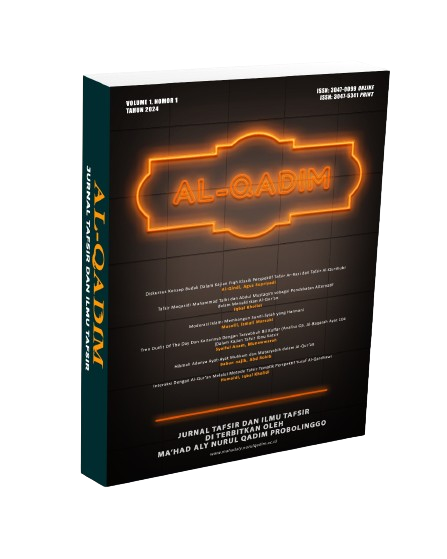Unveiling the Validity of Bi al-Ra’yi Interpretation in Tafsir al-Kasysyaf: Between Linguistic Rhetoric and Theological Bias
Keywords:
al-Zamakhsyari, al-Kasysyaf, bi al-Ra'yi, Tafsir I'tizaliAbstract
This paper discusses the figure of al-Zamakhshari, a renowned exegete from the Mu’tazilite school, widely known for his monumental work of exegesis, al-Kasysyaf. The work is widely recognized for its deep linguistic and rhetorical approach, with a strong emphasis on the Balaghah (rhetoric) aspects of the Qur'an. The aim of this paper is to assess the validity of the Bi al-Ra’yi method in al-Kasysyaf, examining the interpretive methods used by al-Zamakhshari and the influence of Mu’tazilite theological thought on his interpretations. Using a qualitative and library research approach, this study finds that while al-Kasysyaf is highly regarded for its linguistic and literary qualities, readers should be cautious of the theological bias it contains. The paper concludes with a reflection on the contributions and controversies of al-Kasysyaf in the tradition of Islamic scholarship.
Downloads
Downloads
Published
Issue
Section
License
Copyright (c) 2025 Akhmad Baihaqi, Alif Akbar Hidayatullah (Author)

This work is licensed under a Creative Commons Attribution-NonCommercial-ShareAlike 4.0 International License.
- Authors retain copyright and grant the journal right of first publication with the work simultaneously licensed under a This work is licensed under a Creative Commons Attribution-NonCommercial-ShareAlike 4.0 International License. that allows others to share the work with an acknowledgment of the work's authorship and initial publication in this journal.
- Authors are able to enter into separate, additional contractual arrangements for the non-exclusive distribution of the journal's published version of the work (e.g., post it to an institutional repository or publish it in a book), with an acknowledgment of its initial publication in this journal.
- Authors are permitted and encouraged to post their work online (e.g., in institutional repositories or on their website) prior to and during the submission process, as it can lead to productive exchanges, as well as earlier and greater citation of published work.











